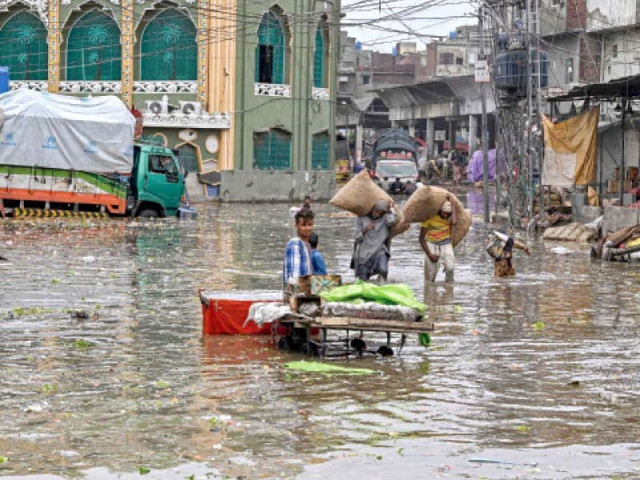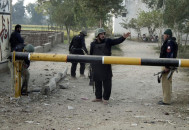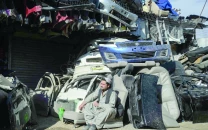Many areas flooded by sewage in Karachi
Mild rainfall overwhelms city's clogged drainage system

The mild, but incessant rain for three consecutive days has exposed the city's inadequate drainage infrastructure.
Although the main roads may be clear, but various neighbourhoods in Gulshan-e-Iqbal, Shafiq Mor, Two Minute Chowrangi, Saddar, Bahadurabad, Korangi, Landhi, Liaquatabad, and others, are grappling with urban flooding in lanes and streets.
Despite the worsening conditions, authorities have yet to take significant action to alleviate the crisis. In Gulshan-e-Iqbal, stagnant rainwater remains on service roads even after four days, causing sewage to overflow and creating unsanitary conditions that have greatly inconvenienced residents.
The ongoing monsoon rains have wreaked havoc on North Karachi's sewage system. At Two Minute Chowrangi, the service road has transformed into a virtual pond, with standing water and sewage turning the area into a hazardous quagmire.
While main roads have seen some drainage efforts, the town administration has neglected the inner streets, leaving them submerged and forcing local shopkeepers to take matters into their own hands. The flooding has severely disrupted business activities, with many shops shuttered due to the persistent water and filth.
Residents are effectively trapped in their homes as roads remain clogged with garbage and floodwaters. A local from North Karachi lamented that even minor rainfall now results in severe waterlogging. The situation is further compounded by the lack of drain covers, posing a significant risk to pedestrians and schoolchildren. The service road is nearly impassable, with many shops forced to close, deepening the impact on local commerce.
The community has called on officials to reconstruct the roads and address the drainage issues before the situation worsens further. Concerns over the environmental impact are mounting, with fears that the stagnant sewage could lead to outbreaks of disease. The demand for immediate action to drain the rainwater and sewage has become increasingly urgent.
In Gulshan-e-Iqbal, roads ranging from small streets to major thoroughfares are submerged, making it extremely challenging for residents to move around. The flooding has also created significant obstacles for patients attempting to reach medical facilities. At a local private hospital, patients have been forced to wait in muddy conditions, while ambulances struggle to navigate the waterlogged roads.
One patient pointed out that while the rain itself is manageable, the poor management of the city's infrastructure has exacerbated the situation, turning short trips into hours-long ordeals. Although there are efforts to clear water from the main roads, the neglected side streets and service roads continue to pose serious challenges and require urgent attention.
A resident of Gulshan-e-Iqbal shared that public transport fares have surged due to the flooded streets, creating additional hardships for schoolchildren and daily commuters. Despite the road being constructed just a year and a half ago, it is riddled with potholes that exacerbate the flooding. The entire sewage system in the area is in disrepair, and without immediate intervention, the risk of accidents and health issues will only grow. The foul stench of sewage permeates affected areas, and the streets of Saddar, Korangi, Landhi, Malir, Shah Faisal Colony, Bahadurabad, Liaquatabad, the Old City Area, and others are littered with debris and deteriorating due to the standing water.



















COMMENTS
Comments are moderated and generally will be posted if they are on-topic and not abusive.
For more information, please see our Comments FAQ